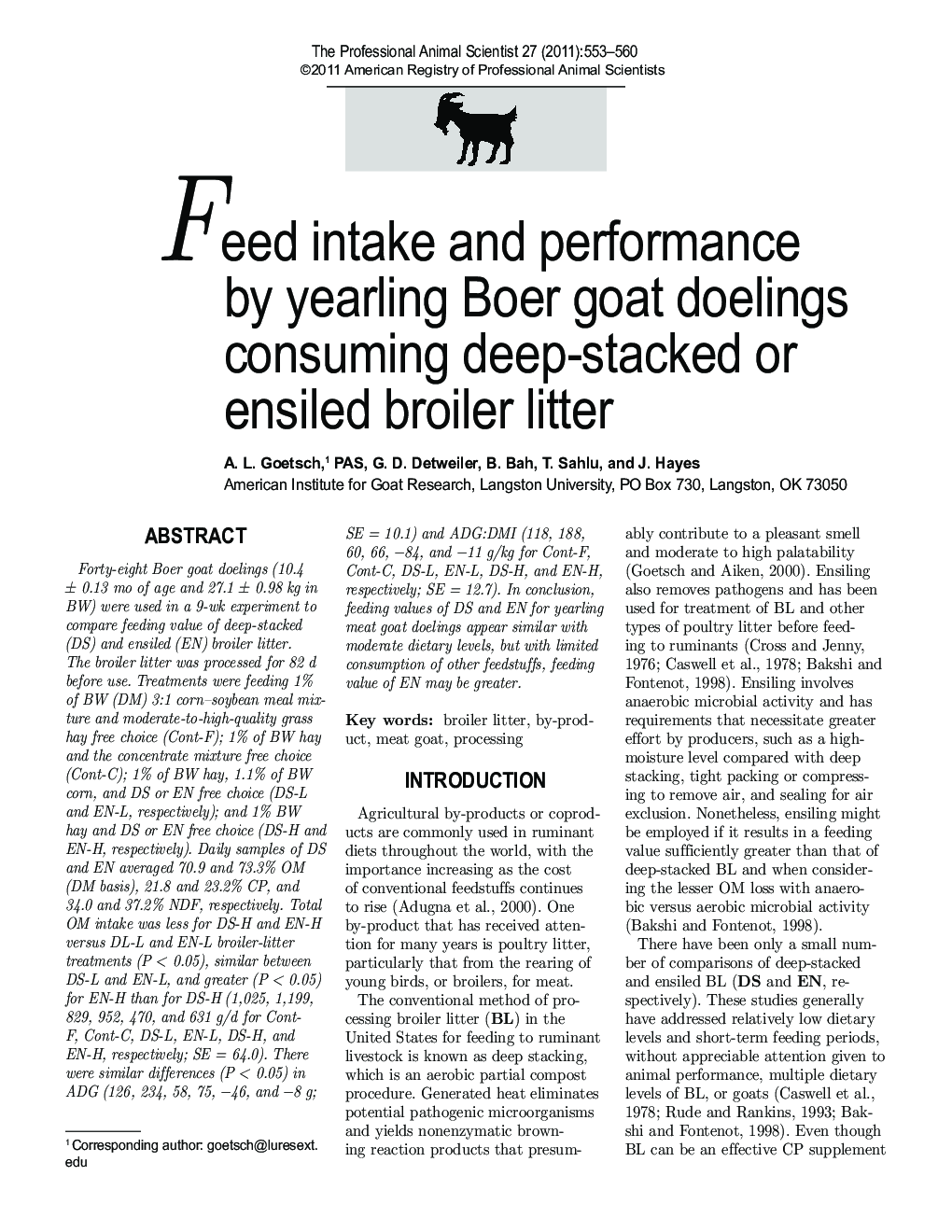| Article ID | Journal | Published Year | Pages | File Type |
|---|---|---|---|---|
| 2454004 | The Professional Animal Scientist | 2011 | 8 Pages |
Abstract
Forty-eight Boer goat doelings (10.4 ± 0.13 mo of age and 27.1 ± 0.98 kg in BW) were used in a 9-wk experiment to compare feeding value of deep-stacked (DS) and ensiled (EN) broiler litter. The broiler litter was processed for 82 d before use. Treatments were feeding 1% of BW (DM) 3:1 corn-soybean meal mixture and moderate-to-high-quality grass hay free choice (Cont-F); 1% of BW hay and the concentrate mixture free choice (Cont-C); 1% of BW hay, 1.1% of BW corn, and DS or EN free choice (DS-L and EN-L, respectively); and 1% BW hay and DS or EN free choice (DS-H and EN-H, respectively). Daily samples of DS and EN averaged 70.9 and 73.3% OM (DM basis), 21.8 and 23.2% CP, and 34.0 and 37.2% NDF, respectively. Total OM intake was less for DS-H and EN-H versus DL-L and EN-L broiler-litter treatments (P < 0.05), similar between DS-L and EN-L, and greater (P < 0.05) for EN-H than for DS-H (1,025, 1,199, 829, 952, 470, and 631 g/d for Cont-F, Cont-C, DS-L, EN-L, DS-H, and EN-H, respectively; SE = 64.0). There were similar differences (P < 0.05) in ADG (126, 234, 58, 75, -46, and -8 g; SE = 10.1) and ADG:DMI (118, 188, 60, 66, -84, and -11 g/kg for Cont-F, Cont-C, DS-L, EN-L, DS-H, and EN-H, respectively; SE = 12.7). In conclusion, feeding values of DS and EN for yearling meat goat doelings appear similar with moderate dietary levels, but with limited consumption of other feedstuffs, feeding value of EN may be greater.
Related Topics
Life Sciences
Agricultural and Biological Sciences
Animal Science and Zoology
Authors
A.L. PAS, G.D. Detweiler, B. Bah, T. Sahlu, J. Hayes,
